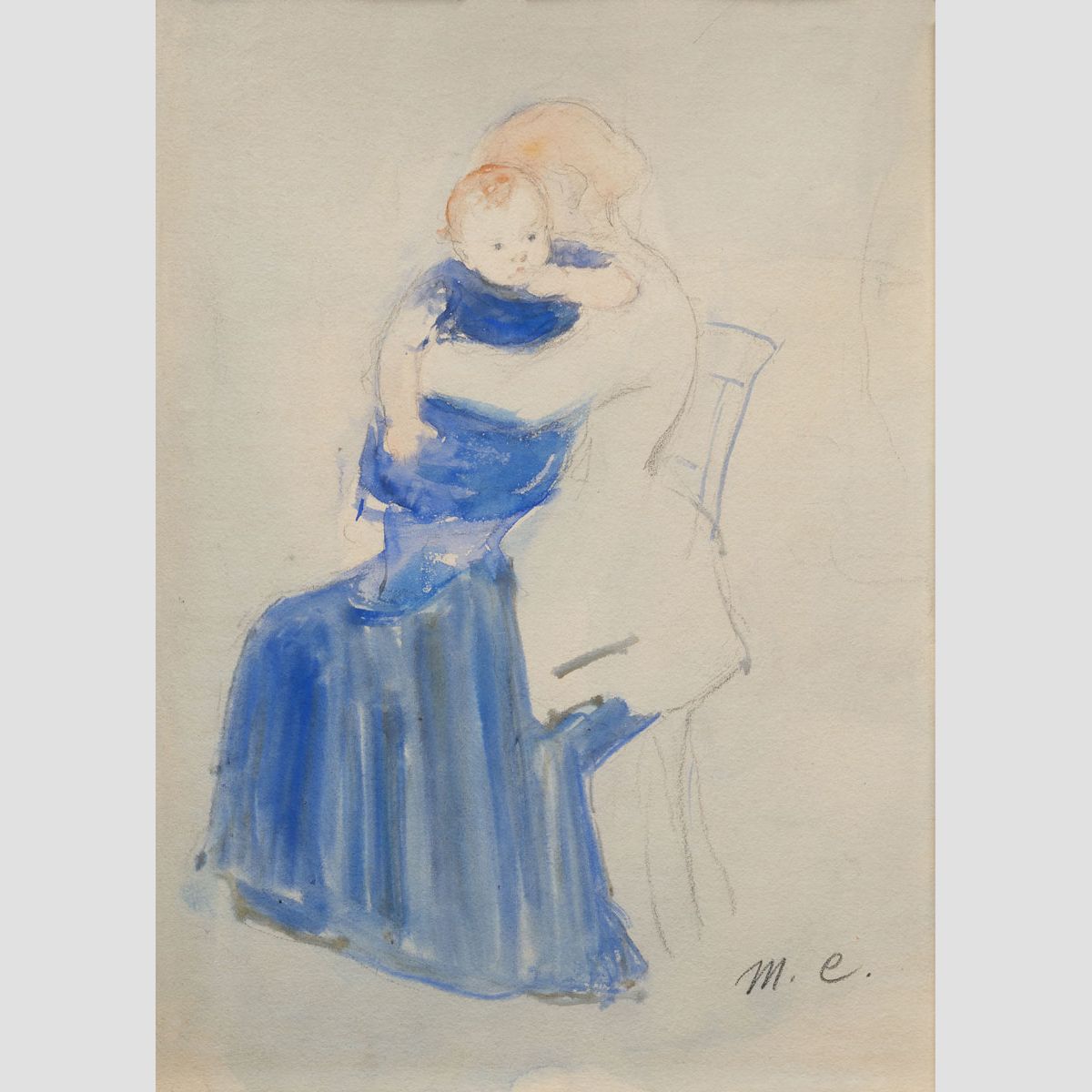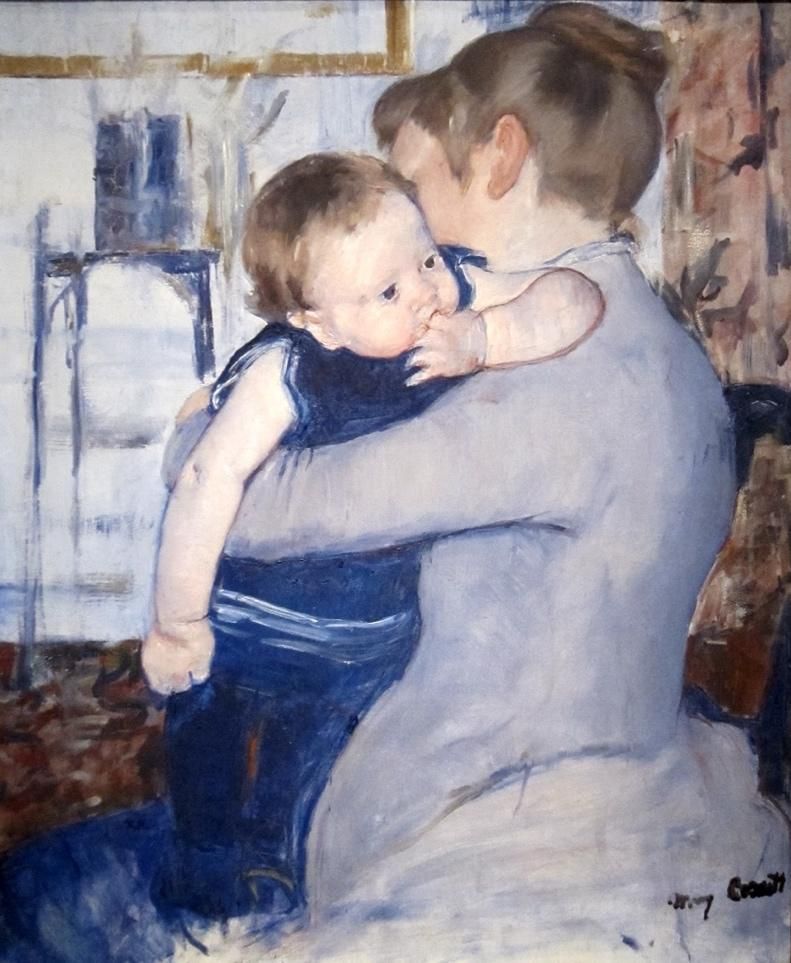
Mary Stevenson Cassatt (1844–1926)
Mother and Child, c. 1889
Watercolor on paper
McMullen Museum of Art, Boston College, Carolyn A. and Peter S. Lynch Collection, 2022.58

Oliver Wunsch
Assistant Professor, Art History

In this watercolor study of a mother holding a baby, Cassatt demonstrates her ability to conjure a world with astonishing efficiency. A few lines define the contours of the figures, while a blue wash and touches of orange establish the major planes of color. Cassatt’s marks, though economical, create an atmosphere of deep intimacy and filial affection, fusing the mother and child into a cohesive unit. The blue of the child’s costume appears to merge with the bottom half of the mother’s dress, making it difficult to tell where one person’s clothing ends and the other’s begins.
This study served as the basis for a larger oil painting (see image), now in the Cincinnati Art Museum. The final work is more tightly cropped around the upper half of the figures, accentuating the closeness of the embrace. Though it is more developed than the watercolor, the oil painting maintains the restricted palette and sparing touch of the smaller sketch. In both works, Cassatt integrates the mother and child through a patchwork of shared colors and interweaving lines, using formal relationships to convey personal bonds.

Marina Berzins McCoy
Professor, Philosophy

Mary Cassatt’s Mother and Child depicts an ordinary moment in domestic life: a mother holding a child who gazes out into space. The scene is reminiscent of a Madonna and child; even the blue color evokes Mary. But the figures here are not divine, but worldly. Traditionally the child Jesus may be shown seated and looking out toward the viewer of the painting, or gazing lovingly up to his mother’s face. Philosophical concepts can assist us in deepening our understanding of this work. In the present painting, this child’s gaze is directed neither at his mother nor to the viewer, but outward into space. The mother’s face is obscured so that we cannot see it; we have no sense of her individuality, only of her role as child bearer. This deliberate obscuration of the mother by her child, at the same time that she supports him, raises questions about recognition. Human identity is in part formed through mutual recognition, as the philosopher Paul Ricoeur has argued. Mature persons are both the subjects and objects of mutual recognition, as part of our fundamental ethical attitudes towards one another. Insofar as we fail to recognize another, it is an ethical failure. Here, Cassatt investigates the viewer’s recognition of the seated woman. Is her identity given by, or obscured by her maternity? To what extent is her sense of self apart from her maternal role “hidden”? How is motherhood both essential to her identity and a possible site of obscuration?
